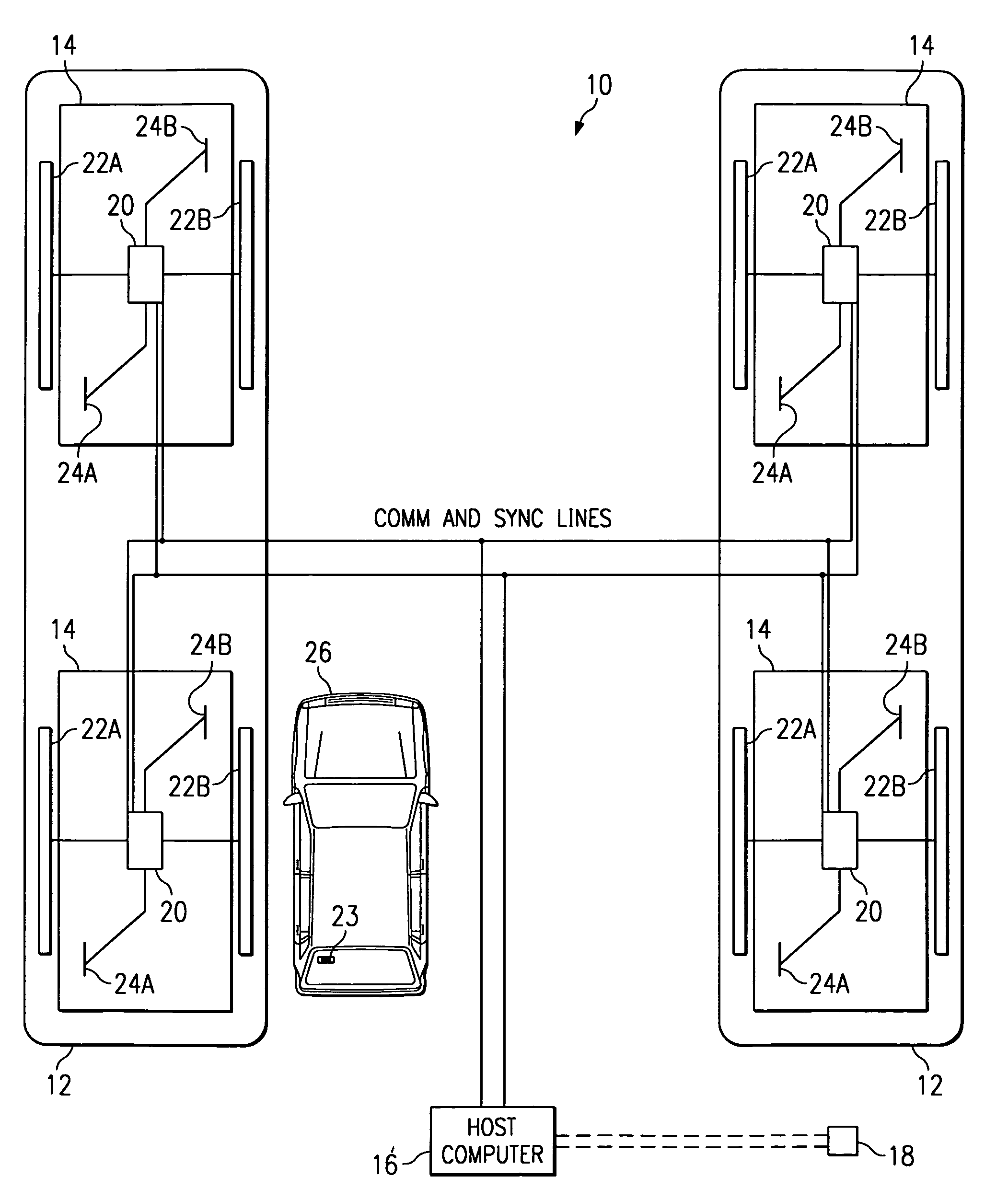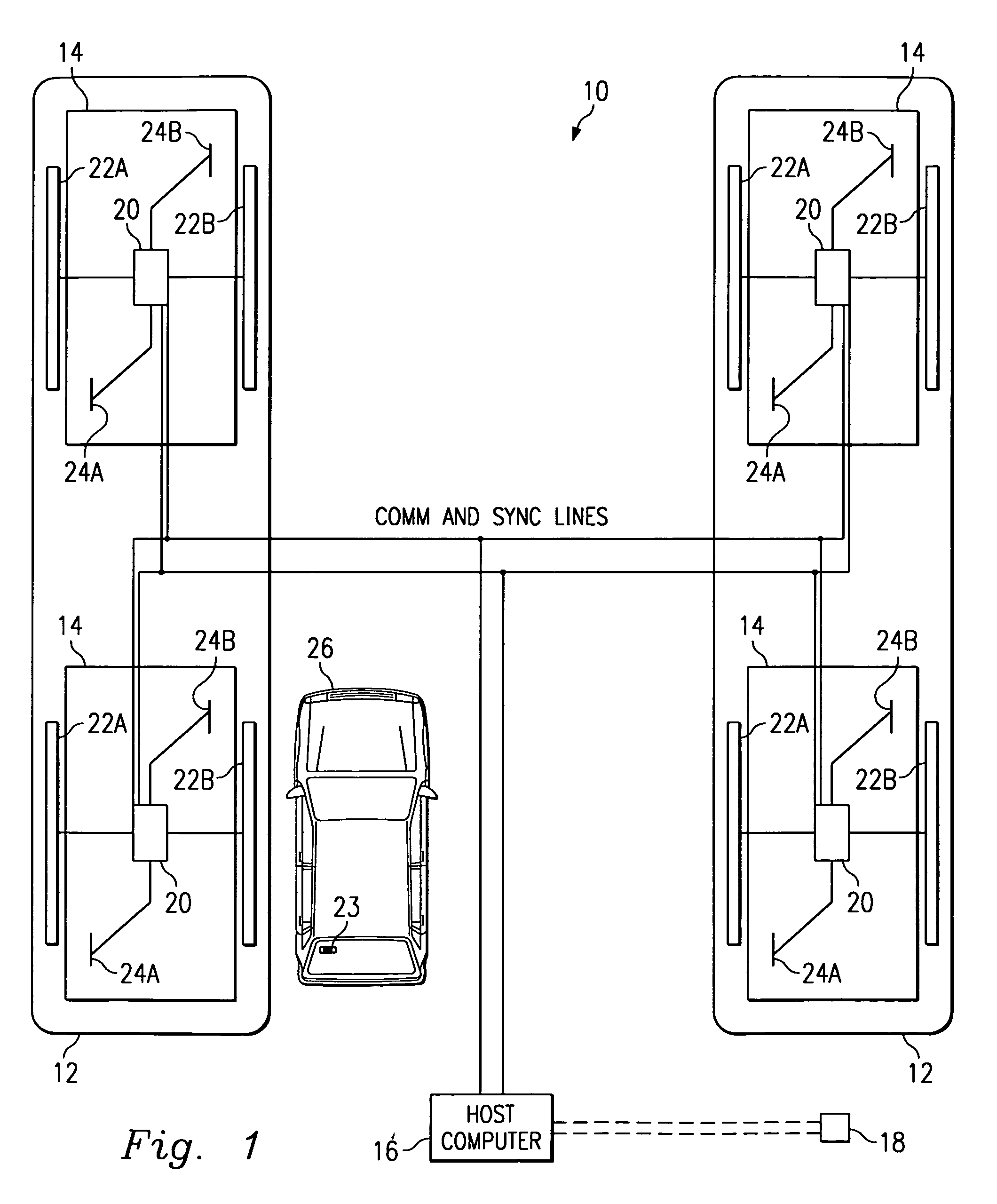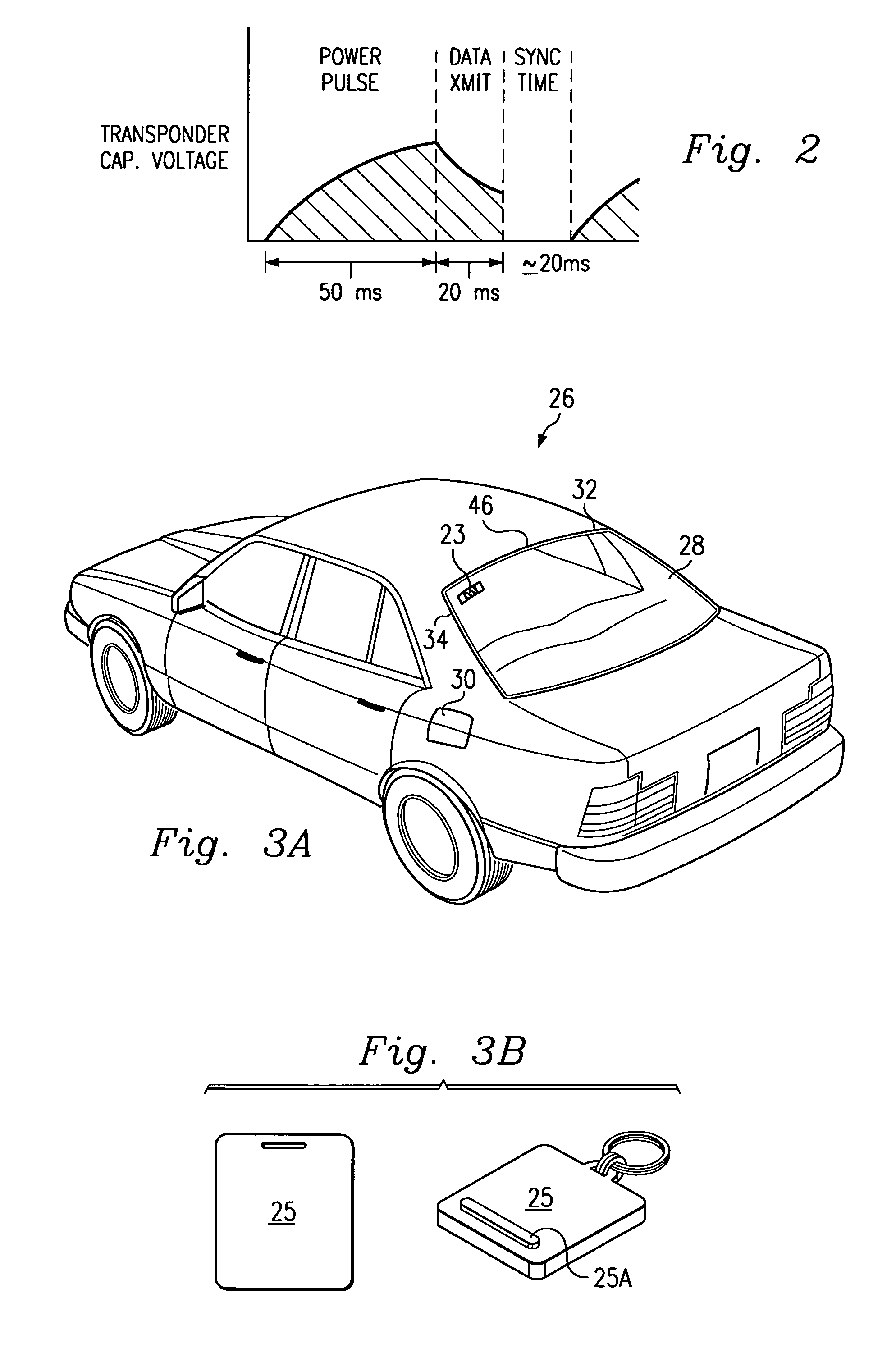Dispensing system and method with radio frequency customer identification
- Summary
- Abstract
- Description
- Claims
- Application Information
AI Technical Summary
Benefits of technology
Problems solved by technology
Method used
Image
Examples
Embodiment Construction
[0052]In FIG. 1, the reference numeral 10 refers to a customer identification (CID) system embodying features of the present invention. The system 10 electronically identifies a customer, authorizing a transaction involving the purchase of goods or services by that customer, and subsequently bills the customer's account for the services. In one embodiment the system 10 identifies, authorizes, and bills customers for services provided at a service station. Generally, the system 10 allows customers to drive up to a fuel dispenser and immediately begin pumping fuel (or have fuel pumped for them) without having to go inside the service station building to pay for the fuel or having to insert a credit card into a card reader at the fuel dispenser. As explained further below, the system 10 may also be used for other services at the station such as a car wash or for making payments inside a convenience store.
I. System Overview
[0053]In one embodiment (FIG. 1), the system 10 is implemented i...
PUM
 Login to View More
Login to View More Abstract
Description
Claims
Application Information
 Login to View More
Login to View More - R&D
- Intellectual Property
- Life Sciences
- Materials
- Tech Scout
- Unparalleled Data Quality
- Higher Quality Content
- 60% Fewer Hallucinations
Browse by: Latest US Patents, China's latest patents, Technical Efficacy Thesaurus, Application Domain, Technology Topic, Popular Technical Reports.
© 2025 PatSnap. All rights reserved.Legal|Privacy policy|Modern Slavery Act Transparency Statement|Sitemap|About US| Contact US: help@patsnap.com



